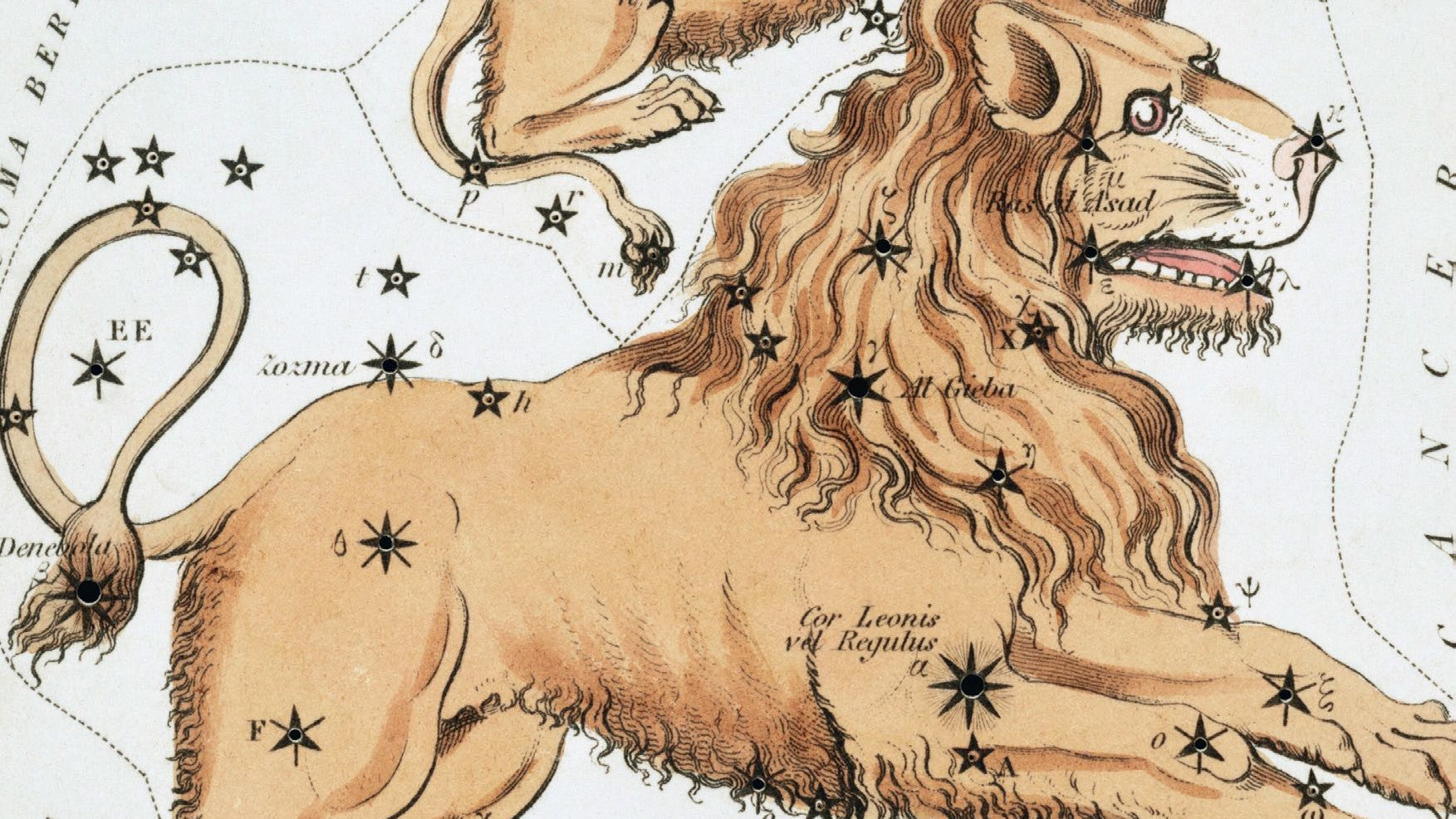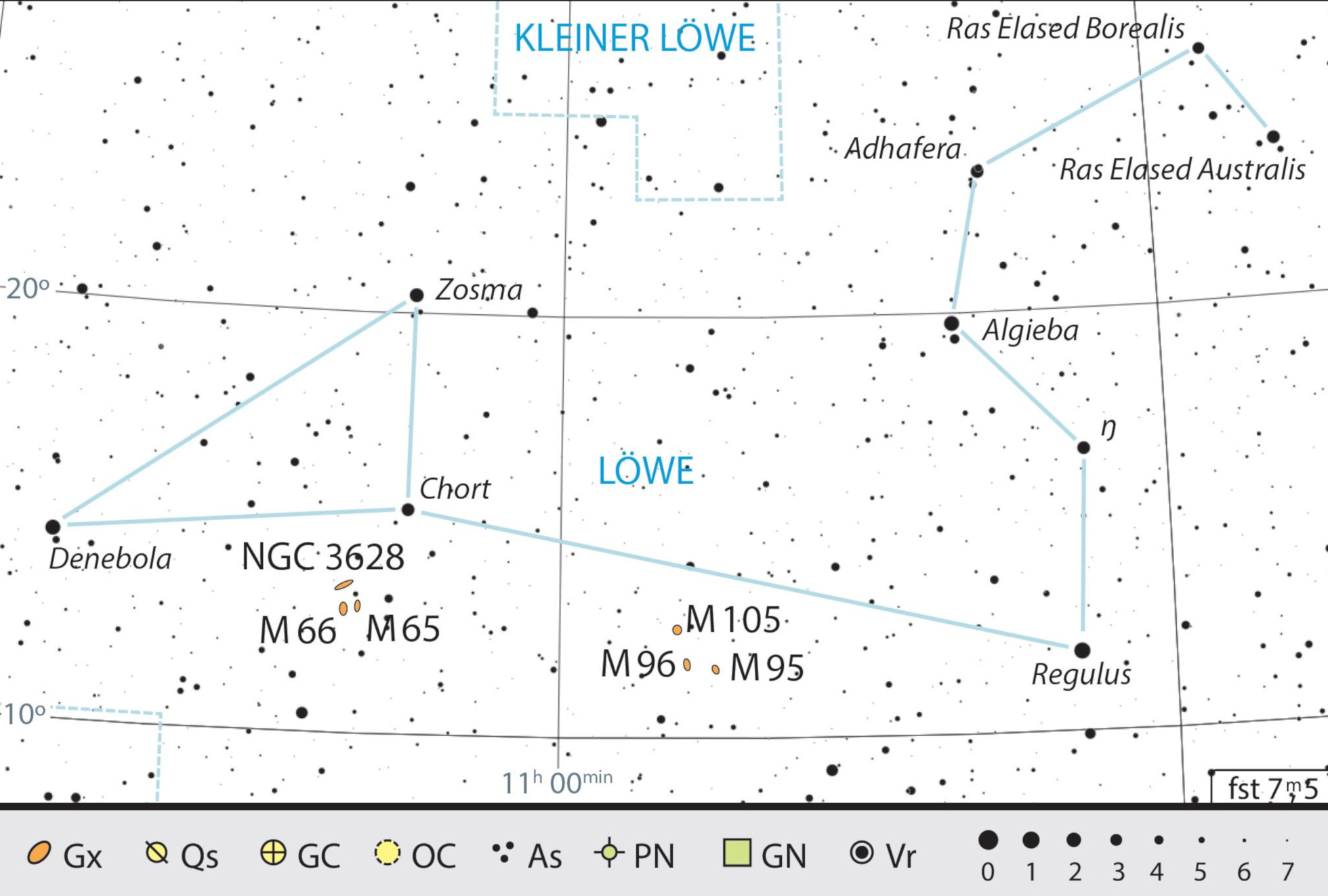Leo
This striking constellation scores points with its galaxies; they even come in packs of three. And its brightest star, Regulus, rotates faster than any other.
 Whereas today you would recognise the constellation’s form as that of a domestic iron, thousands of years ago celestial observers imagined a crouching lion, whose heart is marked by the bright star Regulus.
Whereas today you would recognise the constellation’s form as that of a domestic iron, thousands of years ago celestial observers imagined a crouching lion, whose heart is marked by the bright star Regulus.Due to its many bright stars and its size, Leo is one of the most striking and easy-to-find constellations. In the spring, the Big Dipper is at its zenith, directly above our heads. If you go south from here, you come across a striking, elongated figure. At first glance it reminds you of a domestic iron with a handle formed from a curved chain of stars. Its location is even easier to find at the moment, as the giant planet Jupiter’s trajectory takes it directly below Leo’s iron.
The lion, as king of the animals, symbolises strength and power. This symbolism can also be found in the name of its main star, because the constellation’s brightest star is called Regulus, which translates from Latin as "little king" or "prince".
Regulus is a star of extremes, because no other star rotates faster than this distant sun. It rotates around its axis at an insane speed of 1.2 million km/h, making it the flattest star of the northern sky; its diameter at the equator is 30% larger than that at its poles! If Regulus rotated just 4% faster, its centrifugal forces would tear it apart.
The first Herculean task
Today, we often refer to a very difficult task as Herculean, and the first ever Herculean task involved an invincible lion. In Greek mythology, the distinctive constellation depicted the Nemean Lion. This monster wreaked havoc in the eastern region of the Peloponnese, where it threatened man and beast. The fur of the terrible creature was impervious to attack, so that neither sword, arrow nor spear could harm it. The animal could even withstand Hercules' powerful club.
But Hercules was to defeat the Nemean Lion: the legendary hero hunted it down and strangled it with his bare hands. Hercules made himself a cloak from its fur, and turned the lion's head into a helmet, which made him equally invulnerable in battle.
2 times 3
Springtime is galaxy time! Whilst in winter there are usually star clusters and gas nebulae in our own galaxy on our observation program, now our gaze is taken far beyond the Milky Way and into the depths of the universe. In the middle between the stars θ and ι Leo you will find a group of three galaxies: M65, M66 and NGC 3628; the Leo Triplet. A little further west, Leo reveals another galaxy trio with M95, M96 and M105, which combines with the Leo Triplet to form the Leo I group of galaxies.
 Outline map of the constellation of Leo with our observing recommendations. J. Scholten
Outline map of the constellation of Leo with our observing recommendations. J. ScholtenAuthor: Nico Schmidt / Licence: Oculum-Verlag GmbH
